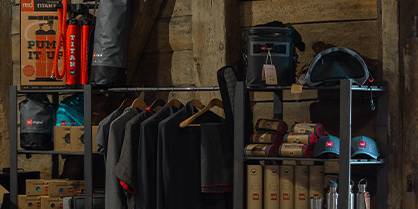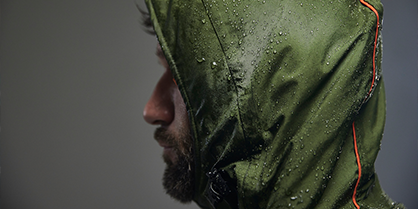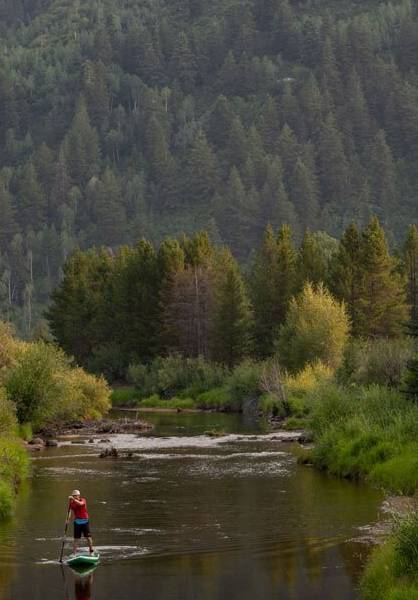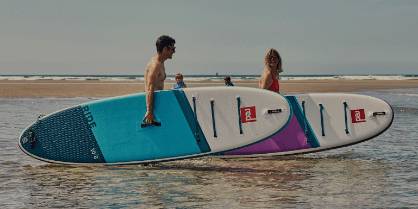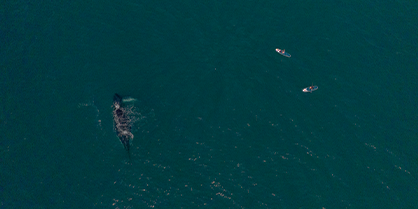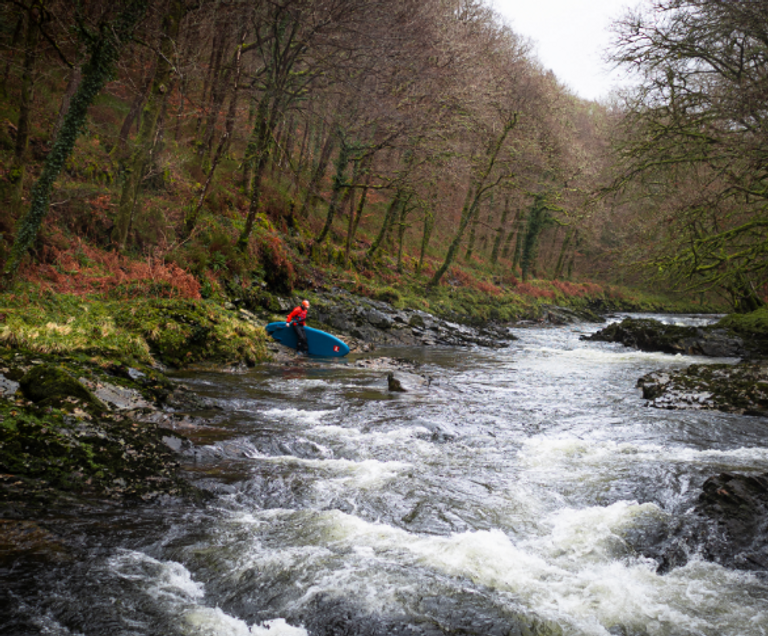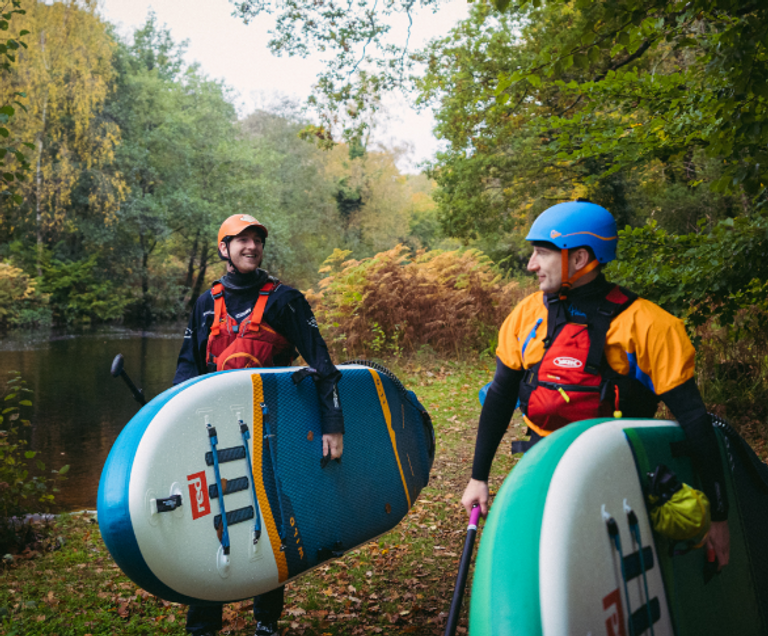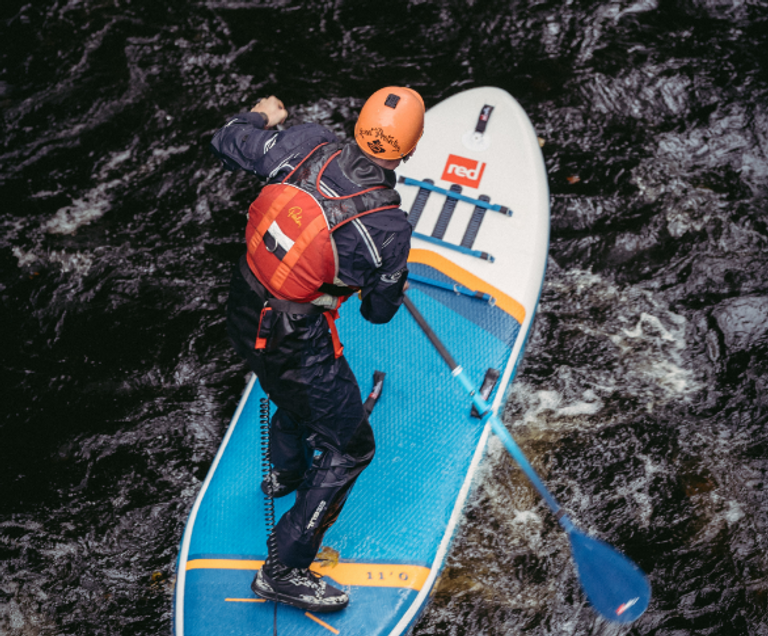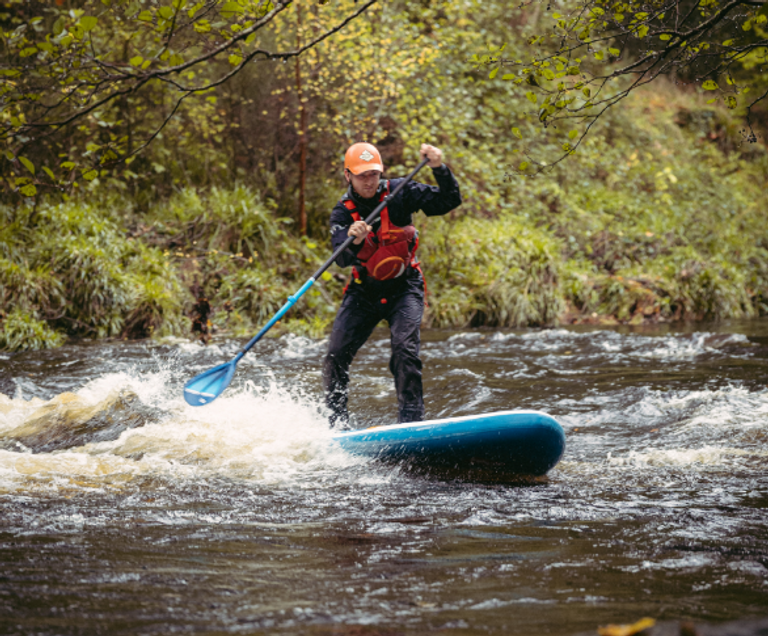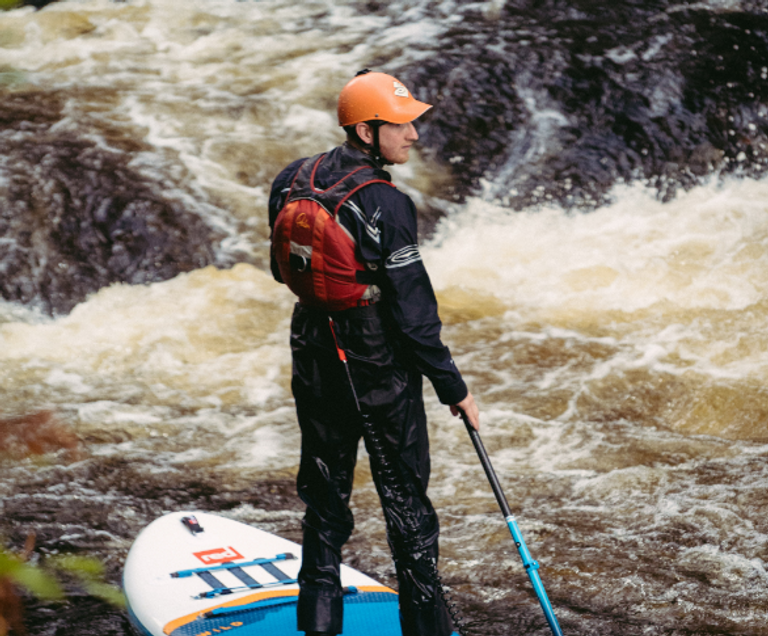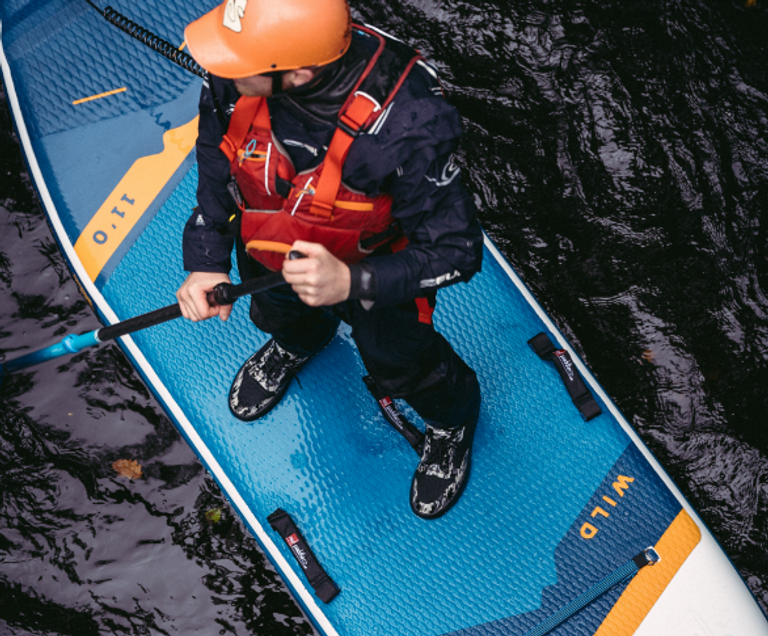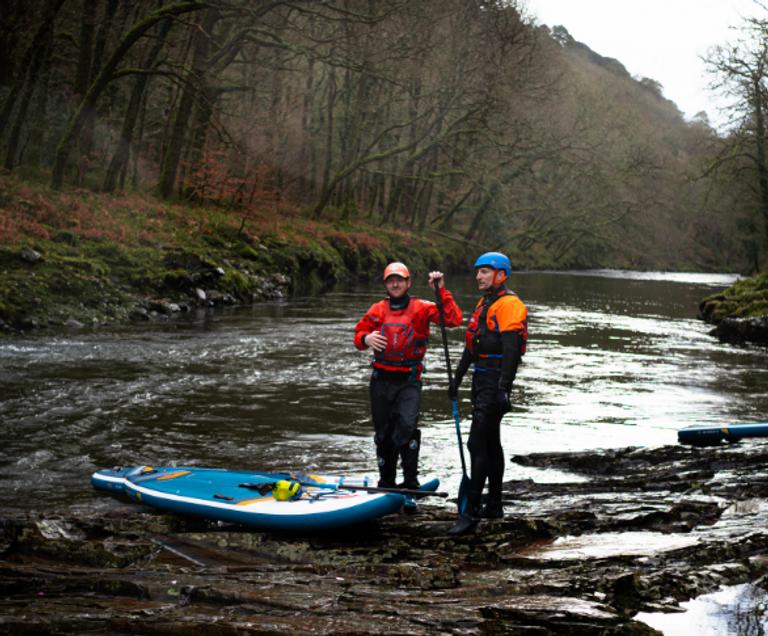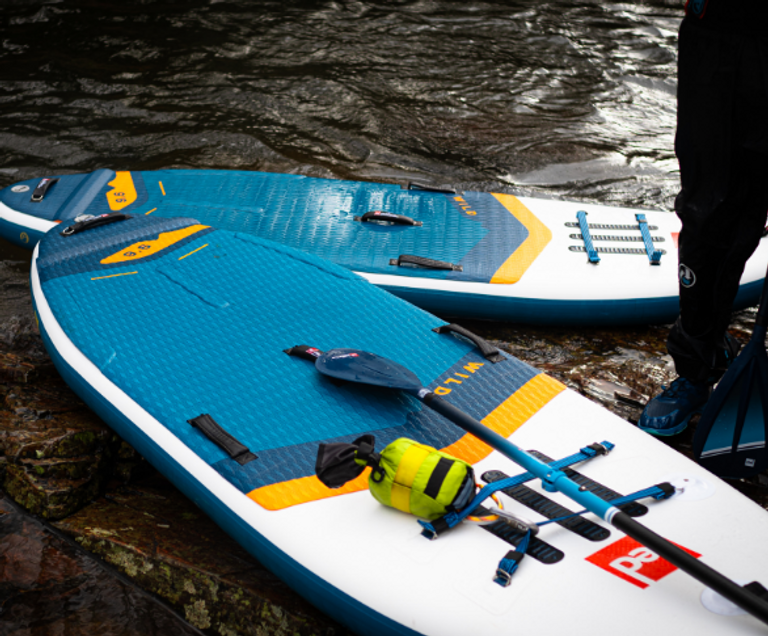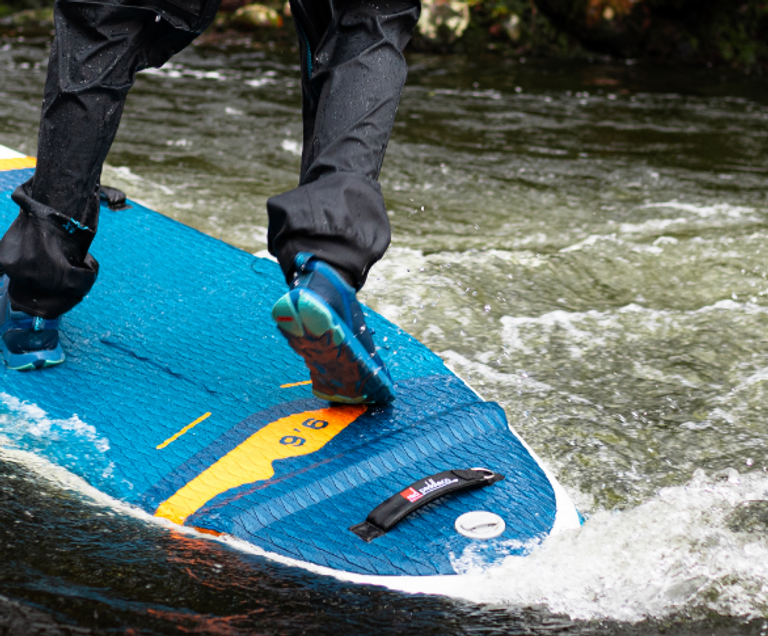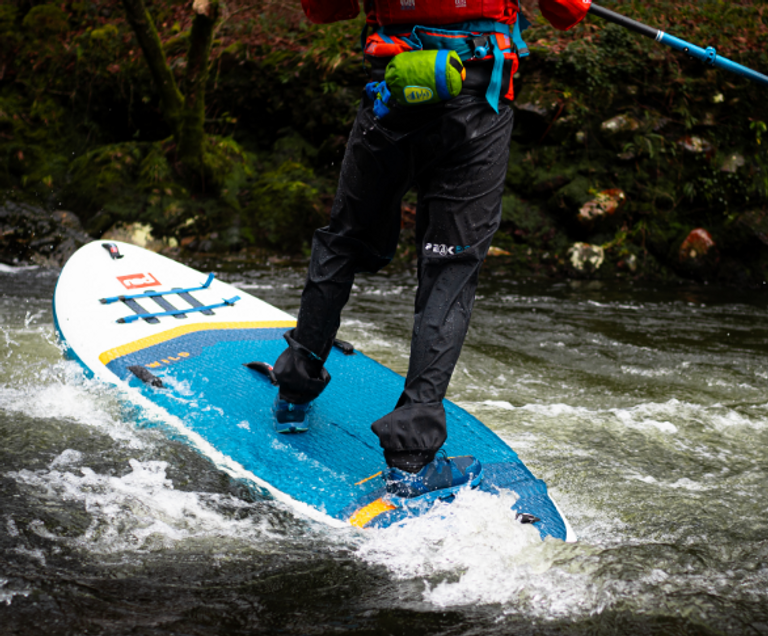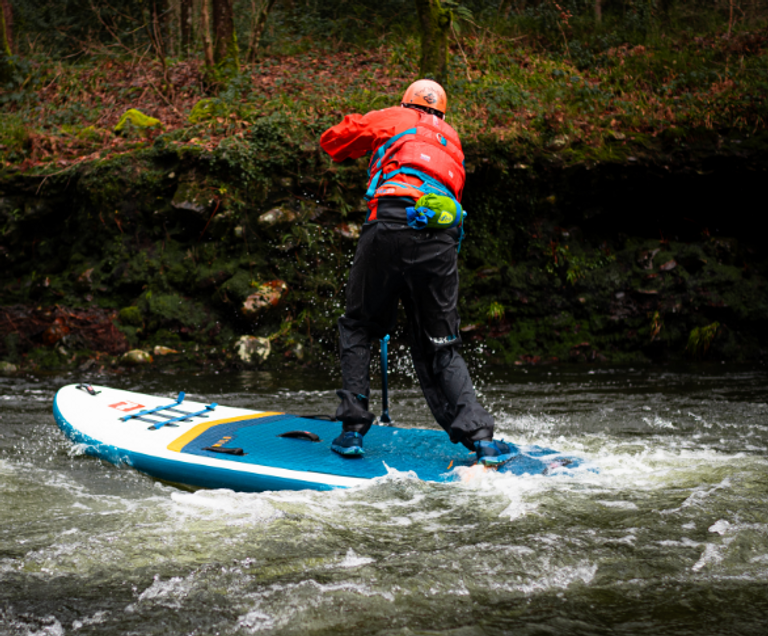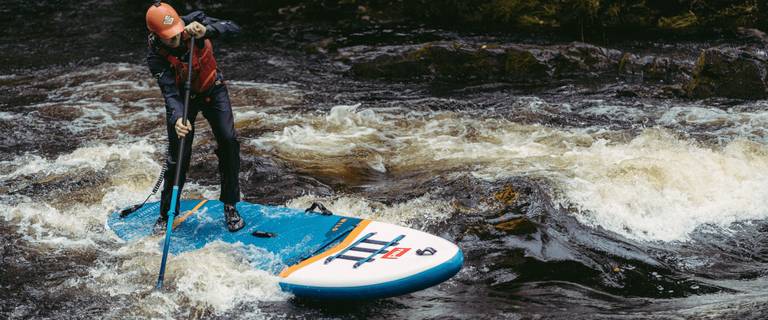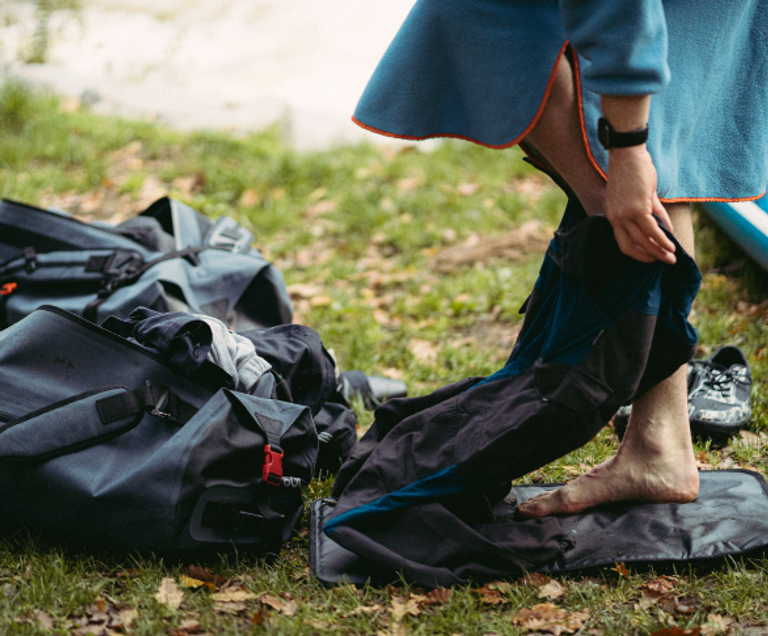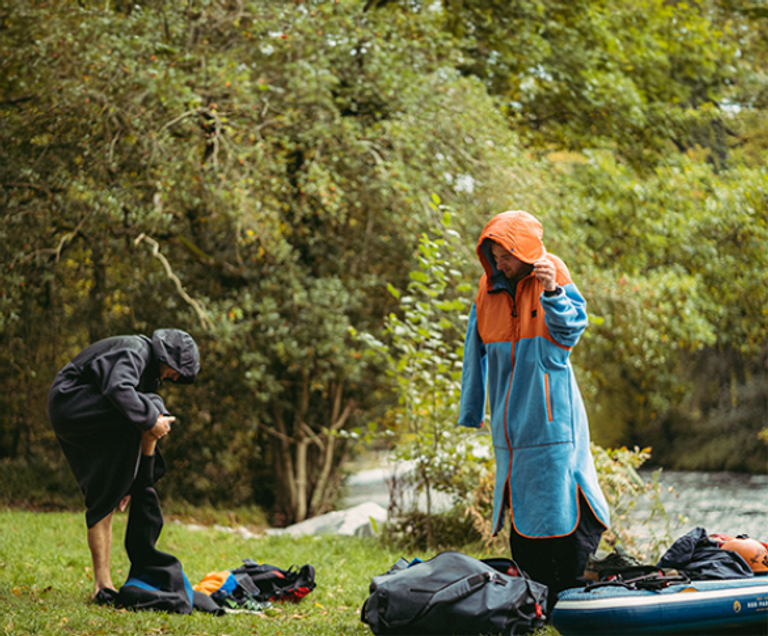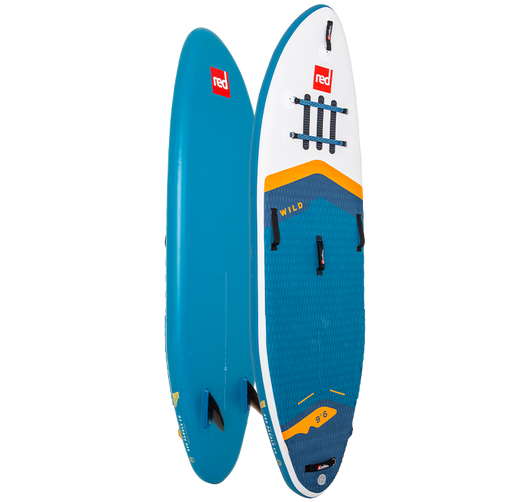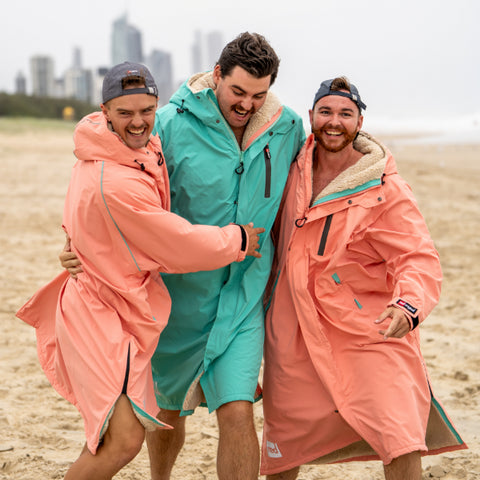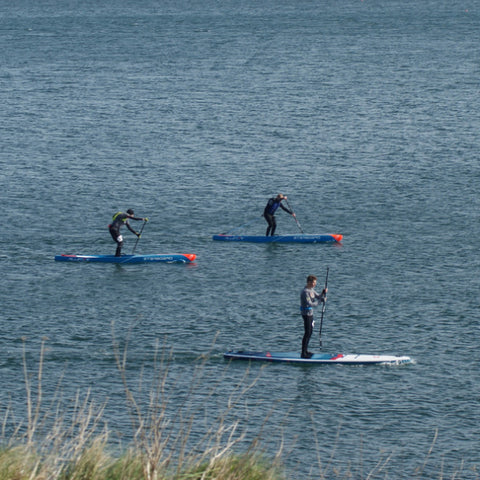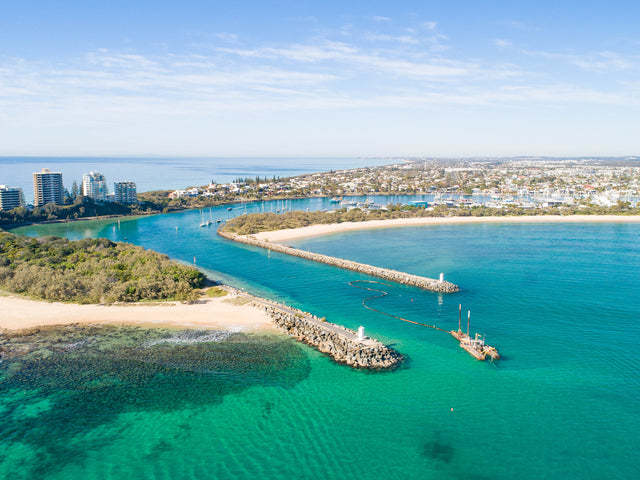How To White-Water SUP: A Guide to White-Water Stand-Up Paddling with a Wild Inflatable Paddleboard
How To Upgrade Your Adventure Paddle BoardingPosted by Lydia Burdett
Venturing into the world of white water paddle boarding can be an exhilarating and rewarding experience. If you’re a capable flat-water paddler or SUPsurfer looking for a new challenge, Red Paddle Co’s Wild range of inflatable paddleboards is your ticket to ride the rapids. In this guide – with expert advice from white-water SUP coach Adam Burns, Centre Manager at Willowgate Activity Centre in Perth, Scotland – we’ll run you through the essentials of getting started with white water SUP.
Choose the Right Kit
Before you hit fast-flowing water, make sure you have the right gear. Alongside a board (more below) you’ll need a decent Paddle, a helmet and a Buoyancy Aid / personal flotation device (PFD) designed for white-water activities. If you choose to wear a leash, make sure it’s a waist-mounted quick-release attachment to reduce the likelihood of leash entrapment in fast moving water. Depending on your risk assessment, in white-water you might choose not to use a leash at all. (As per the latest guidance from British Canoeing.)
When it comes to choosing a board, Red’s Wild range has been developed specifically for white water paddle boarding. Both Wild boards feature a pronounced nose rocker and high sides to help them glide over the white-water more easily. A couple of members of the Red HQ team are white-water paddlers, with connections to top riders in the community, including white-water SUP coaches, who were able to feedback on the development and testing of the boards.
The 9'6" Wild is best for technical white-water, drops and river surfing – the shorter length allows the user to be more agile in the rapids. The 9'6" also features a raised deckpad for foot positioning and stability when running technical sections.
The 11'0" Wild is more stable, and faster – a white-water touring board that’s easier to paddle flat sections and carry gear.
Adam tells us:
“I’m currently paddling the 9'6" Wild and loving the way it moves in the water, the twin-fins allow for great directional stability through rapids with the length of the board meaning that turning comes in quickly and sharply. The pronounced nose rocker brings the nose over waves and allows for some amazing surfing. Using the raised deckpad is allowing me to move around the board more freely using the feel of the board’s deck to inform my decisions more.”
Safety Gear
There’s some basic safety equipment that you should carry when hitting the white stuff – think about the following items:
- Mobile phone in a robust, fully waterproof case such as the Red Dry Pouch.
- Paddle knife.
- Throwline (do a course to learn how to use this before carrying one).
- First aid kit.
- You might want to pack a spare paddle too, like the Red 5-Piece Collapsible SUP Paddle.
Nail the Basics
Before considering fast-flowing water you need to be solid with the core paddling techniques and stances. Practice on still waters before progressing to more challenging environments. Knowing how to maintain balance, paddle efficiently, and perform basic manoeuvres will build your confidence and improve your chances of success. Learning skills like managing your height and how to fall safely will increase confidence, competence, and safety while on white water.
When you’re ready to head into a white water environment it’s important to start somewhere you can build confidence and skill level. Choosing a slow flow where you can focus on technique will ensure development and success while having a great time.
What do ‘Grades’ Mean?
In white-water there are six ‘grades’ of river flow altogether, but we’re really just going to focus on the first three as they essentially represent the full range of SUP-able conditions. Here’s a breakdown of what they mean:
Grade 1: Smaller rapids with minimal to no rocks and other hazards showing. This grade is generally non-technical and the ‘easiest’ river rapids to run.
Grade 2: These rivers generally demand more skill as the technical level is a bit more challenging with features like waves and holes and more eddies (still sections of water on the edges of the river) to take a break in.
Grade 3: The technical ability here is definitely increased: the easiest way to tell if a rapid is likely Grade 3 rather than Grade 2 is that there’s a specific line down the rapid that should be taken. Grade 3 generally have more defined features – bigger stoppers and waves, sometimes with drops involved too.
Grade 4-6: From Grade 4 upwards things become so much more challenging that they’re not commonly paddleboarded.
Find out more about river gradings via this article on Go Paddling.
Safety First
White water paddle boarding comes with its own set of risks, so prioritising safety is crucial. Always wear your Buoyancy Aid, use a proper helmet, and familiarise yourself with river safety guidelines. Start on easy, slow-moving rivers before attempting more advanced rapids. Know what effect recent and predicted weather might have on your spot. Be aware of potential hazards, avoid dangerous river features, and never paddle alone.
Take a Lesson
We strongly recommend taking a white water SUP lesson from a certified coach. They can teach you advanced techniques, river navigation skills, and emergency procedures. A lesson will accelerate your learning curve and provide valuable insights into safe paddling practices. Talking to a coach and identifying what your goals and needs are will help you get the most out of your lessons.
Other courses to look at could be a British Canoeing White Water Safety & Rescue course.
Find a Community
Joining a white water paddle boarding community or club is a fantastic way to connect with experienced river paddlers, share tips, and find paddling friends. Online forums, local clubs, and social media groups can be valuable resources for advice and camaraderie.
Build Fitness & Endurance
White-water SUP takes physical strength and endurance. You’re likely to fall in a lot at the start – and continuous self-rescues can quickly get tiring. Incorporate core-strengthening exercises into your routine to improve balance. Regular paddling on flat water will also help build the stamina needed for navigating rapids.
Bring Snacks!
A top tip is to pack snacks in your Buoyancy Aid, Dry Pouch or Dry Bag. White-water paddling’s amazing fun but hard work – so having that chocolate or cereal bar will keep those energy levels up and keep you paddling for longer.
Explore Beginner-Friendly Rivers
Start your white water SUP journey on rivers with gentle, beginner-friendly sections. Research local spots known for their gentle rapids and gradual progression in difficulty. As your skills improve, you can explore more challenging rivers with confidence.
Core White-Water SUP Skills
- Self-rescue – you should be completely comfortable getting yourself back onto your board.
- Forward paddling – you’ll need to be suitably experienced and proficient with your paddling to get the board where you want it. Driving the board will increase its stability too.
- Managing height – get comfortable with dropping down onto one or both knees and getting back up. Proactively doing this will reduce your chances of falling in and give you more time paddling.
- Stances – getting good at moving around the board and having your feet in different positions will help you adapt as necessary when on white-water.
- Reading the river – this will develop over time and with some coaching, but getting to know how the water works will support you in your decision-making.
Stay Humble & Enjoy
Embrace the learning process, and don’t be afraid to challenge yourself – but don’t push your luck! It’s important you understand the risks involved and only take on river features that are within your capabilities. Celebrate your successes, learn from your experiences … and, most importantly, have fun on the water.
Please note: At the time of our 11'0 Wild photoshoot, the guidance was to wear a waist-belt leash, however this guidance has since been updated. See here.

